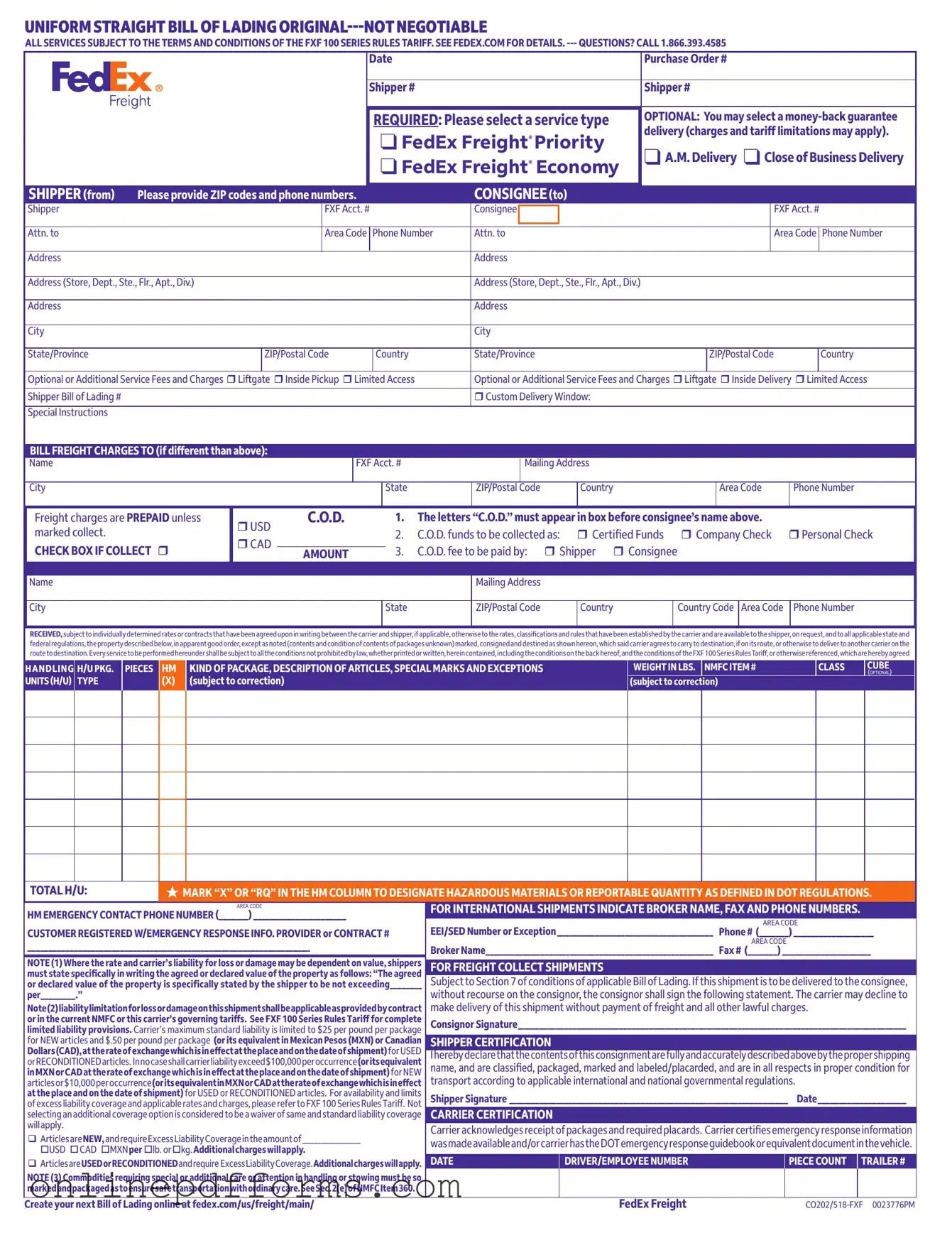The FedEx Bill of Lading is similar to a Standard Bill of Lading. Both documents serve as a receipt for the goods being transported. They outline the details of the shipment, including the shipper and consignee information, as well as the nature of the goods. However, the Standard Bill of Lading is typically used for domestic shipments, while the FedEx version is tailored for specific services provided by FedEx Freight. Each document is essential for tracking and verifying shipments throughout the transportation process.
Another document comparable to the FedEx Bill of Lading is the Air Waybill (AWB). An AWB is used primarily for air shipments and acts as a contract between the shipper and the airline. Like the FedEx Bill of Lading, it includes details about the sender, recipient, and contents of the shipment. However, the AWB is non-negotiable, meaning it cannot be transferred to another party, while some Bills of Lading can be negotiable, allowing for transfer of ownership during transit.
The Commercial Invoice is another document that shares similarities with the FedEx Bill of Lading. This invoice is crucial for international shipments, detailing the transaction between the buyer and seller. It includes information about the goods, their value, and the terms of sale. Both documents are necessary for customs clearance, but the Commercial Invoice focuses more on the financial aspects of the transaction, while the Bill of Lading emphasizes the shipping and logistics details.
A Packing List is also akin to the FedEx Bill of Lading. This document itemizes the contents of a shipment, providing detailed descriptions of the items being sent. While the Bill of Lading serves as a contract and receipt, the Packing List is primarily used for inventory management and verification upon delivery. Both documents work together to ensure that the correct items are shipped and received.
The Delivery Receipt is another document that aligns with the FedEx Bill of Lading. This receipt is signed by the consignee upon receiving the shipment, confirming that the goods have been delivered in good condition. While the Bill of Lading is created before shipping, the Delivery Receipt serves as proof of delivery. Both documents are vital for tracking the shipment and resolving any disputes regarding delivery status.
The Freight Bill is similar in that it outlines the charges associated with transporting goods. It includes the cost of shipping, additional fees, and payment terms. While the FedEx Bill of Lading focuses on the shipment's details and conditions, the Freight Bill is centered on the financial transaction. Both documents are essential for accounting and record-keeping purposes.
Lastly, the Customs Declaration is another document that resembles the FedEx Bill of Lading, particularly for international shipments. This declaration provides customs officials with information about the goods being imported or exported, including their value and purpose. Like the Bill of Lading, it is required for customs clearance. However, the Customs Declaration is more focused on regulatory compliance, while the Bill of Lading serves as a contract between the shipper and carrier.
